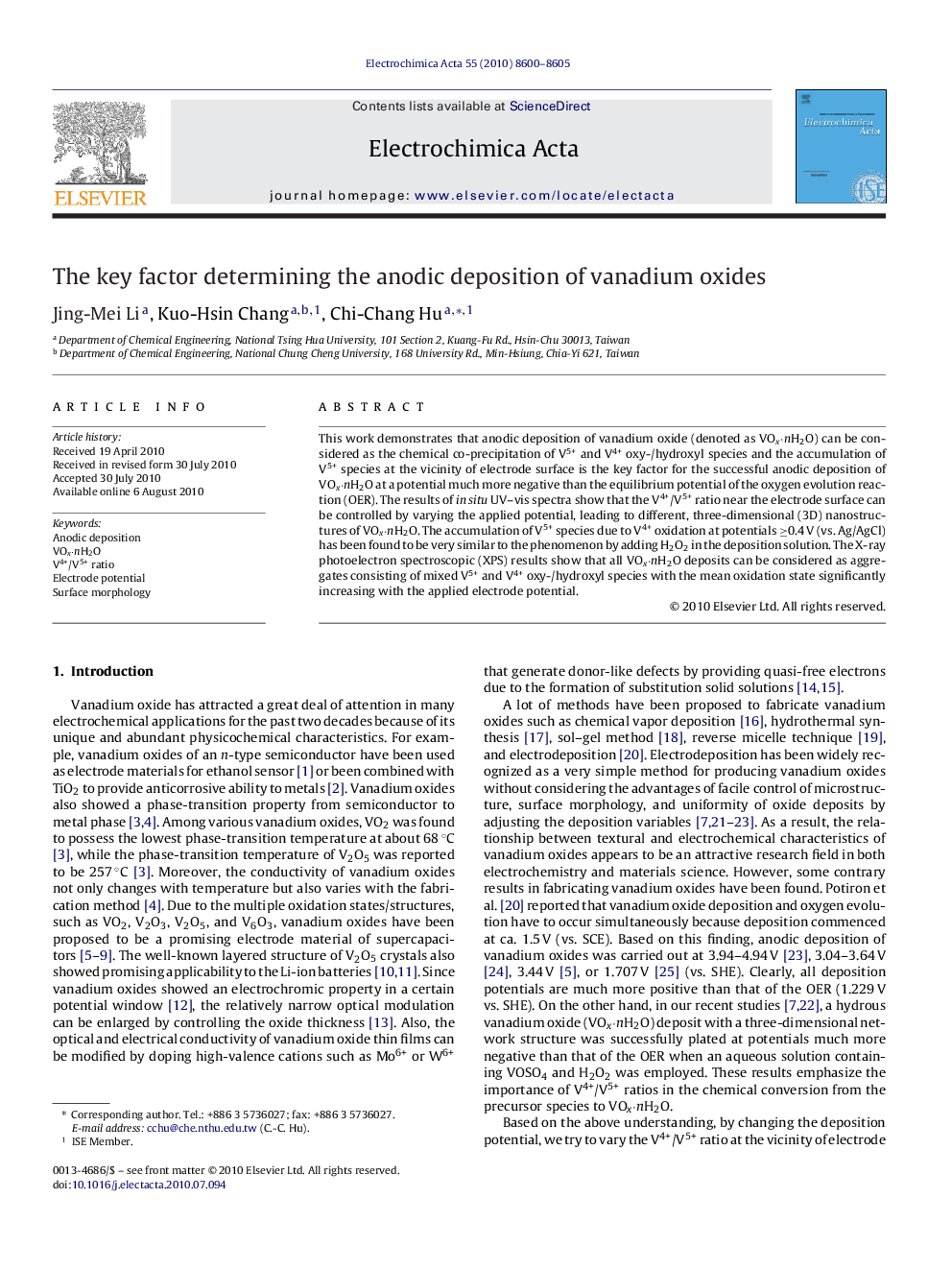| Article ID | Journal | Published Year | Pages | File Type |
|---|---|---|---|---|
| 190014 | Electrochimica Acta | 2010 | 6 Pages |
This work demonstrates that anodic deposition of vanadium oxide (denoted as VOx·nH2O) can be considered as the chemical co-precipitation of V5+ and V4+ oxy-/hydroxyl species and the accumulation of V5+ species at the vicinity of electrode surface is the key factor for the successful anodic deposition of VOx·nH2O at a potential much more negative than the equilibrium potential of the oxygen evolution reaction (OER). The results of in situ UV–vis spectra show that the V4+/V5+ ratio near the electrode surface can be controlled by varying the applied potential, leading to different, three-dimensional (3D) nanostructures of VOx·nH2O. The accumulation of V5+ species due to V4+ oxidation at potentials ≥0.4 V (vs. Ag/AgCl) has been found to be very similar to the phenomenon by adding H2O2 in the deposition solution. The X-ray photoelectron spectroscopic (XPS) results show that all VOx·nH2O deposits can be considered as aggregates consisting of mixed V5+ and V4+ oxy-/hydroxyl species with the mean oxidation state significantly increasing with the applied electrode potential.
